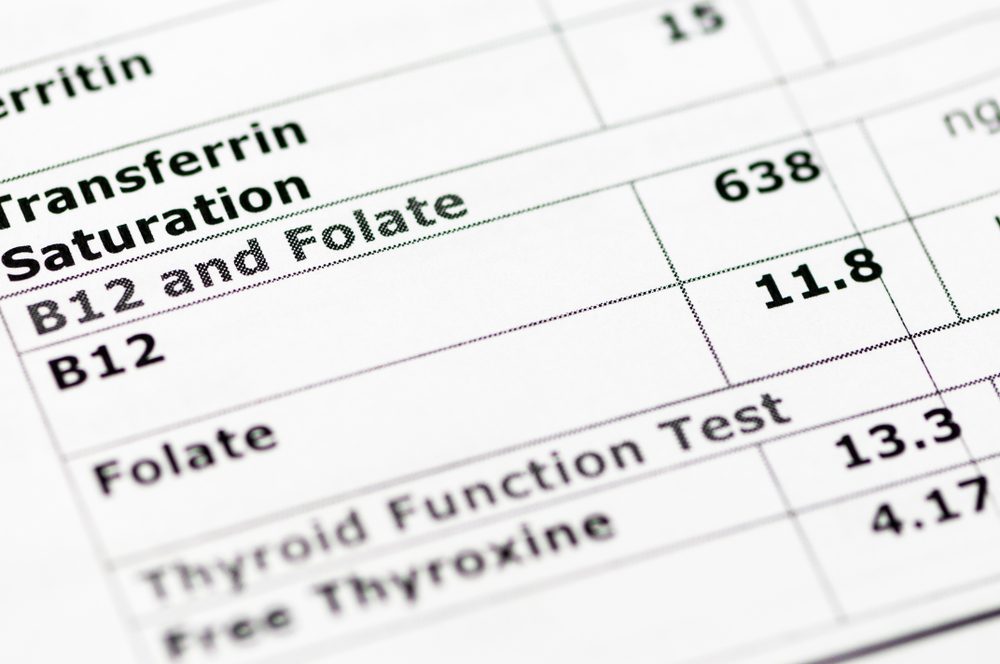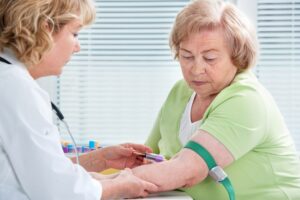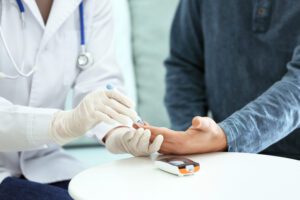
Pale skin
Yellow or pale skin, called jaundice, could result from vitamin B12 deficiency in older adults. Jaundice develops when a person’s body cannot produce enough red blood cells. Red blood cells circulating under the skin are what provide it with its standard color.
Without enough of these cells, the skin can end up looking pale. Vitamin B12 plays a massive role in the production of red blood cells. An absence of vitamin B12 can cause a deficiency of red blood cells, or megaloblastic anemia, associated with jaundice.
This kind of anemia can also weaken the red blood cells, which the body breaks down much faster. When the liver breaks down your red blood cells, it discharges bilirubin, a brownish substance that gives the skin the yellowish tone characteristic of jaundice.
Vomiting, nausea, and diarrhea
Vitamin B12 deficiency can also greatly affect your digestive tract. A lack of red blood cells in your system means that there’s insufficient oxygen reaching your belly. Poor oxygen in this area can lead to an individual feeling sick. It could also ultimately lead to diarrhea.







23 replies on “Vitamin B12 deficiency in Older Adults: 10 Signs and Symptoms You Should Know About”
Concerning B12 deficiency — okay, now we know the problems……what’s the solution????? remind folks, also, that B12 supplements need to be taken under the tongue…. what foods to eat, what to avoid, etc, etc, etc …
Will a blood test tell us ALL that we need to know?
I’m taking both iron and B12 supplements…………….what else should I do?
I have a B12 problem and this advice you give is excellent advice, listing all the foods we can eat to help keep our B12 level ok, I had iron injections a long time ago, I felt great after, now I am in my 70’s and need a course of them again, which I wouldn’t hesitate to have them, thank you for this advice
Can lack of B12 also have effect with this who have Haemochromatosis also?
( too much iron in their blood. 🩸 Genetic Condition)
Why do you make it difficult to get this information?????
Interesting article. Can vitamin 12 deficiency have an impact on joint muscles?
Very interested in having b12 in formation.
Very Very helpful, articles such as this gives you a very good indication when you need to get to your Dr. like “today”, depending on how long some of these problems have been occurring.
Im a adult can I take vitamin B12 ??? thank you .mi age 75
Thank you for this information. I am in an adult living facility and I was told I was low in B12. I was told nothing else. Again I thank you because this is important information.
I notice when I dont have the B12 injection how im so drained, i just wish we could have it in a tablet form instead of the painful injection.
B-12 DOES come in a tablet form, a sublingual, that you put under your tongue & let dissolve. You can alternatively take a liquid form of B-12 that you would also take sublingually. Often when you’re deficient in one of the B Vitamins, you will tend to be deficient in other B Vitamins as well.
B 12 vit will not help as your stomach does not absorb b12 . Injection is the only way to. B12 shot once a month for me has helped so much
I enjoyed it! Very informative.
Im interested in any B12 info as I am coming up on my 2nd year as a septuagenarian. Please include me in any future B12 info. Thank you so much.
This is an interesting article. The first few paragraphs state the problem & end with ‘”Click “Next” to learn about the 10 signs and symptoms.’. But try as I might, I could not locate the said button. So I am still waiting “for the rest of the story..”
Go to where there are a roll of numbers in green. Each number takes you to different pages finishing the article on number 9.
Good to have your lectures on vitamin B12. I am 77yrs old and need it. Is Vitamin B12 tablets available?
There’s no list of 10 symptoms!
You have to go to the next tabs in the bottom to see the 10 symptoms.
Are B12 gummies ok to take? You said they should be taken under the tongue
I’ve I was diagnosed with low B12 more than 15 years ago – I’m now 69. I was told by my doctor that there is an enzyme in your gut that allows you to use the B12 you eat that often is no longer there in older adults. Even taking mega doses of B12 my condition did not improve. I started the injections and immediately started feeling like myself again. I’m now trying transdermal patches that I bought online to see if they work as well as injections. My Medicare drug plan does not cover B12 injections – if the patches don’t work I’ll have my doctor give me a separate prescription – I can get it for a good price using Good RX but I would rather not inject myself monthly if there’s a pain free way to get the same results.
When my mother passed away I was so stressed that I lost my short term memory. I had to take shots for a year.
B12 injections are more effective once a month….pills have malabsorption in the elderly population..